外研版(2019)选择性必修 第四册Unit 4 Everyday economics Vocabulary & Starting out课件(共23张PPT)
文档属性
| 名称 | 外研版(2019)选择性必修 第四册Unit 4 Everyday economics Vocabulary & Starting out课件(共23张PPT) | 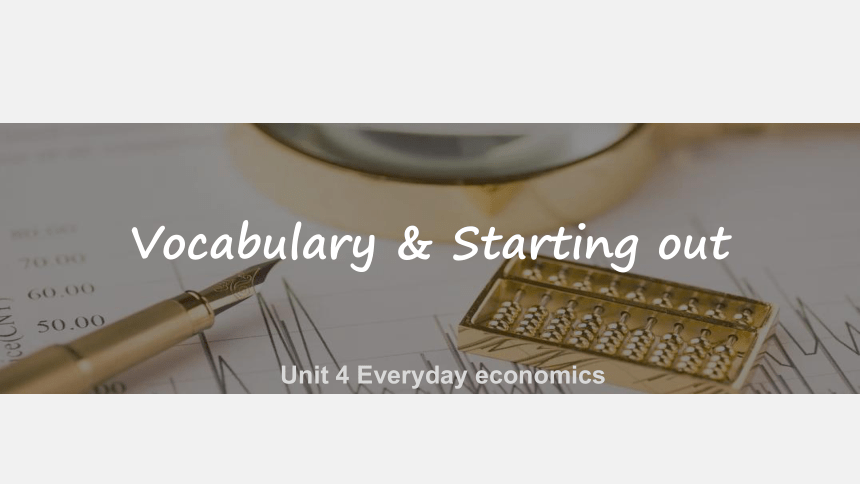 | |
| 格式 | pptx | ||
| 文件大小 | 78.8MB | ||
| 资源类型 | 教案 | ||
| 版本资源 | 外研版(2019) | ||
| 科目 | 英语 | ||
| 更新时间 | 2024-04-27 19:17:58 | ||
图片预览

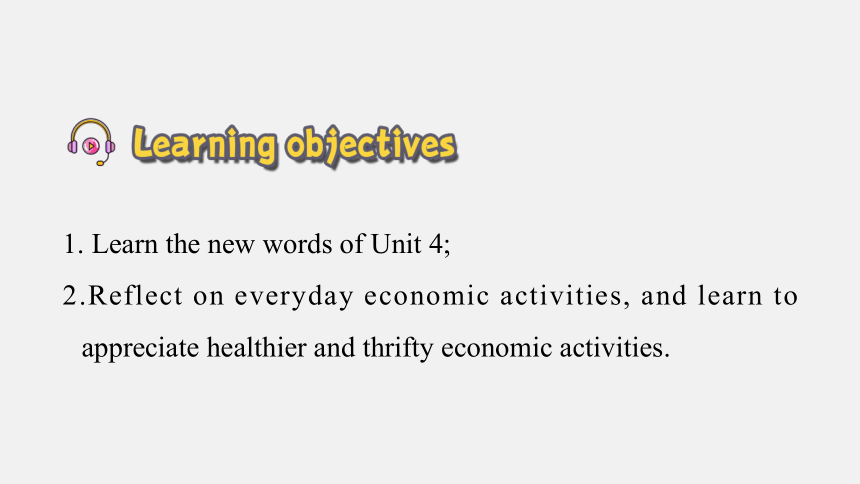
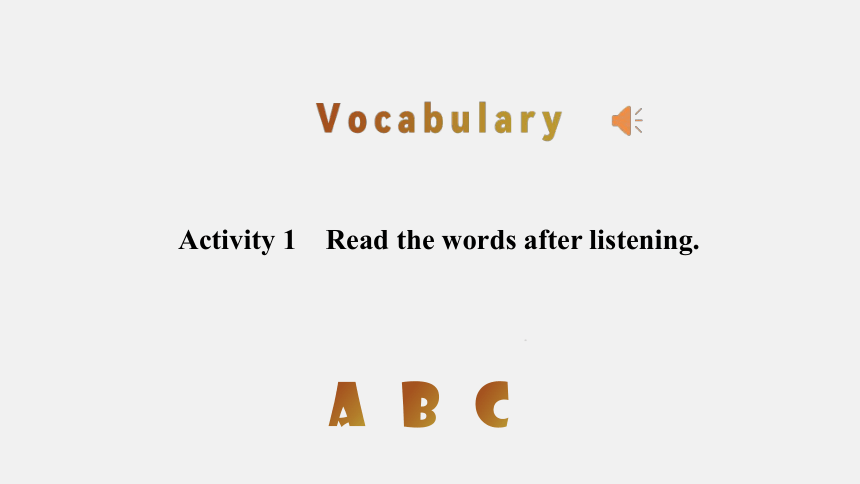
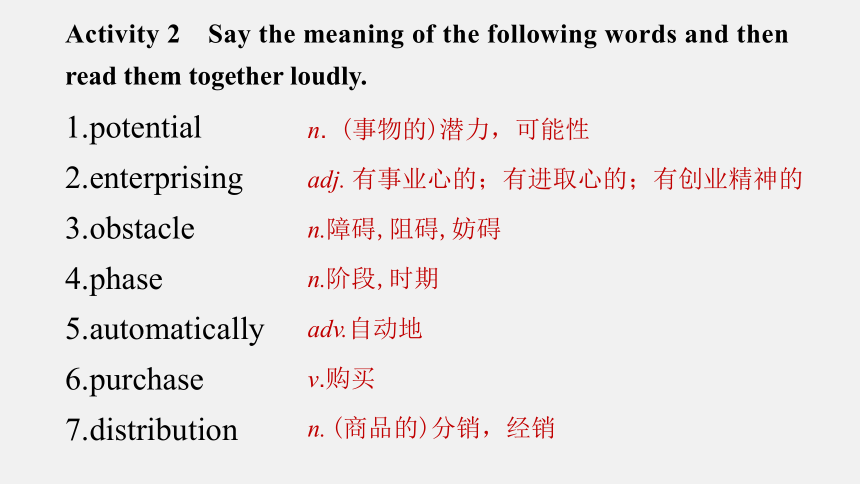
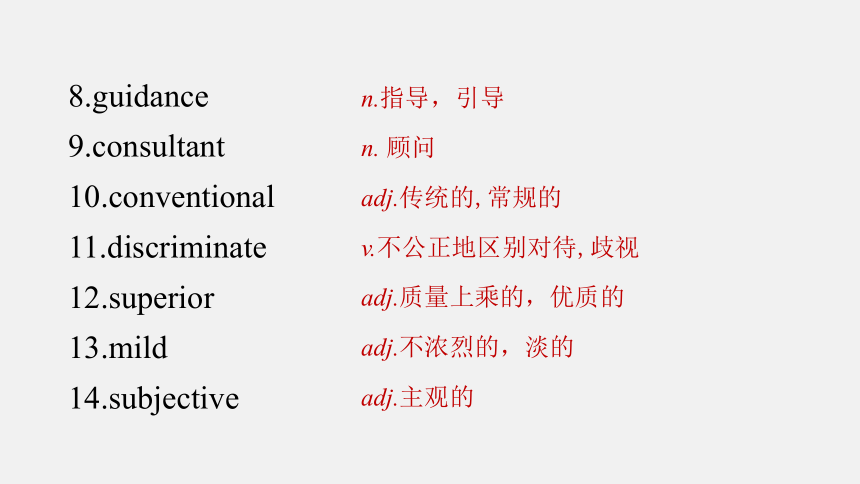
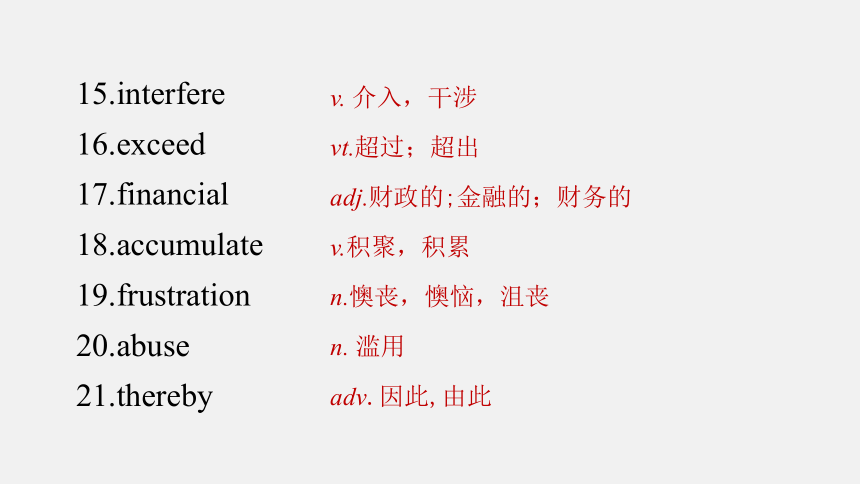
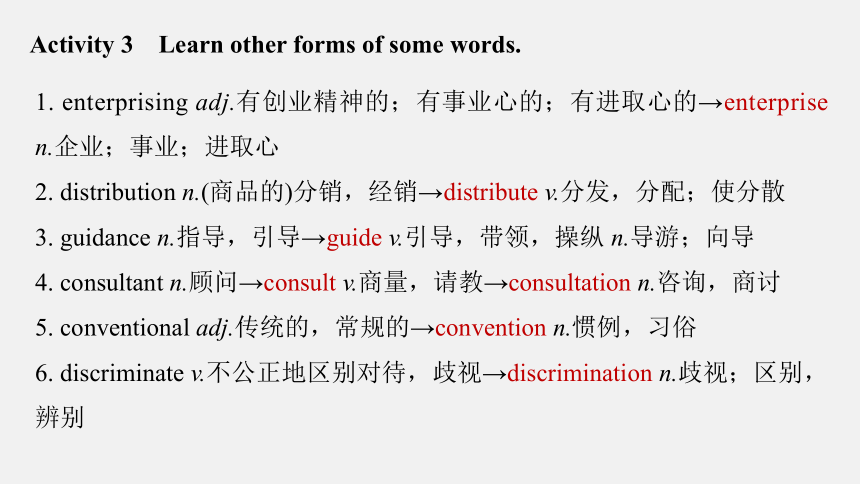
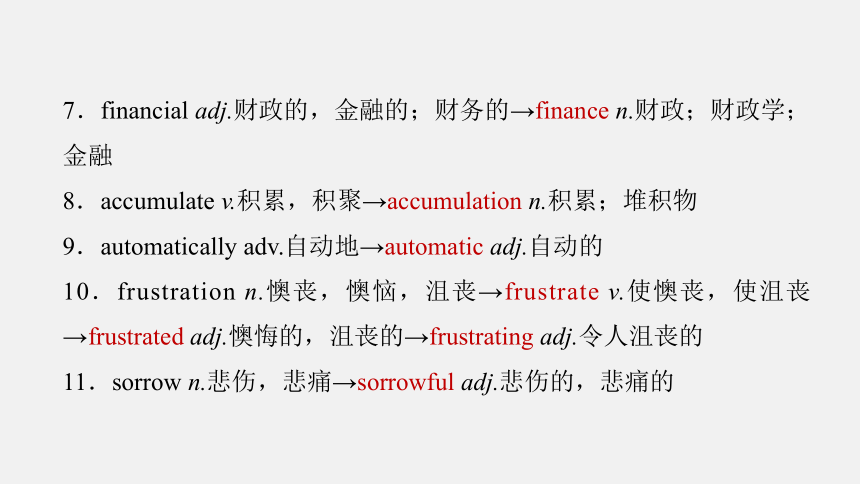
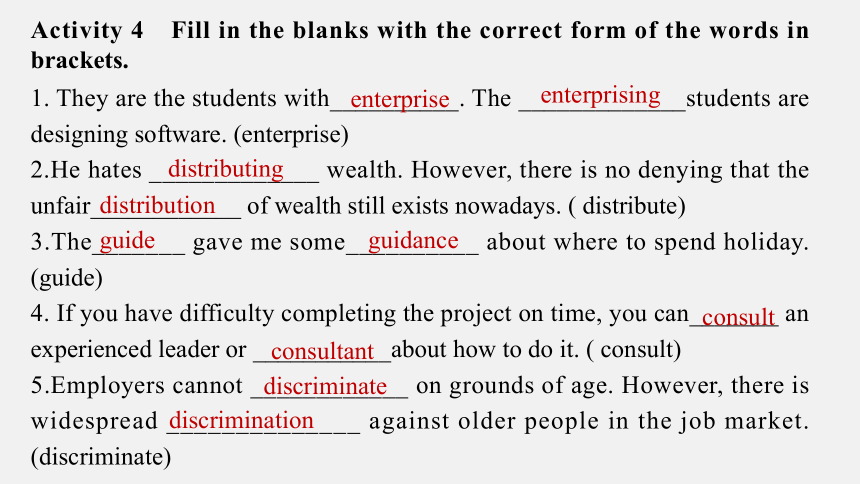
文档简介
(共23张PPT)
Vocabulary & Starting out
Unit 4 Everyday economics
1. Learn the new words of Unit 4;
2.Reflect on everyday economic activities, and learn to appreciate healthier and thrifty economic activities.
Activity 1 Read the words after listening.
1.potential
2.enterprising
3.obstacle 4.phase
5.automatically
6.purchase
7.distribution
n. (事物的)潜力,可能性
adj. 有事业心的;有进取心的;有创业精神的
n.障碍,阻碍,妨碍
n.阶段,时期
adv.自动地
v.购买
n. (商品的)分销,经销
Activity 2 Say the meaning of the following words and then read them together loudly.
8.guidance
9.consultant
10.conventional
11.discriminate
12.superior
13.mild
14.subjective
n.指导,引导
n. 顾问
adj.传统的,常规的
v.不公正地区别对待,歧视
adj.质量上乘的,优质的
adj.不浓烈的,淡的
adj.主观的
15.interfere
16.exceed 17.financial
18.accumulate
19.frustration
20.abuse
21.thereby
v. 介入,干涉
vt.超过;超出
adj.财政的;金融的;财务的
v.积聚,积累
n.懊丧,懊恼,沮丧
n. 滥用
adv.因此,由此
1. enterprising adj.有创业精神的;有事业心的;有进取心的→enterprise
n.企业;事业;进取心
2. distribution n.(商品的)分销,经销→distribute v.分发,分配;使分散
3. guidance n.指导,引导→guide v.引导,带领,操纵 n.导游;向导
4. consultant n.顾问→consult v.商量,请教→consultation n.咨询,商讨
5. conventional adj.传统的,常规的→convention n.惯例,习俗
6. discriminate v.不公正地区别对待,歧视→discrimination n.歧视;区别,辨别
Activity 3 Learn other forms of some words.
7.financial adj.财政的,金融的;财务的→finance n.财政;财政学;金融
8.accumulate v.积累,积聚→accumulation n.积累;堆积物
9.automatically adv.自动地→automatic adj.自动的
10.frustration n.懊丧,懊恼,沮丧→frustrate v.使懊丧,使沮丧→frustrated adj.懊悔的,沮丧的→frustrating adj.令人沮丧的
11.sorrow n.悲伤,悲痛→sorrowful adj.悲伤的,悲痛的
1. They are the students with__________. The _____________students are designing software. (enterprise)
2.He hates _____________ wealth. However, there is no denying that the unfair____________ of wealth still exists nowadays. ( distribute)
3.The_______ gave me some__________ about where to spend holiday. (guide)
4. If you have difficulty completing the project on time, you can_______ an experienced leader or ___________about how to do it. ( consult)
5.Employers cannot ____________ on grounds of age. However, there is widespread ______________ against older people in the job market. (discriminate)
enterprise
enterprising
distributing
distribution
guide
guidance
consult
consultant
discriminate
discrimination
Activity 4 Fill in the blanks with the correct form of the words in brackets.
1.至于,关于________________
2.对……的回应____________________
3.以最低价格_____________________
4.以损害……为代价___________________
5.受……支配,受……影响_________________
6.出租 _________________
7.妨碍,阻碍_______________
8.突然成功,飞机起飞____________
9.有助于,捐赠,投稿________________
10.使收支相抵___________________
as to
response to
at rock-bottom prices
at the expense of
be subject to
rent out
interfere with
take off
contribute to
make ends meet
Activity 5 Learn some phrases.
1.Too often, when you stand up to give a speech, you focus on the “public”__________________ the “speaking.”
2. So if we send out a robot with the single instruction of fetching coffee, it will have a strong desire to secure success by disabling its own off switch or even killing anyone who might ___________ its task.
3.Students who are found with pets, whether visiting or owned by the student, _____________an initial fine of $100 and a continuing fine of $50 a day per pet.
4.Where can you put an advertisement to _______ a room during a big event
5.When the delayed flight will________ depends much on the weather.
at the expense of
interfere with
are subject to
rent out
take off
Activity 6 Fill in the blanks with words from the phrases above.
What are they
Chinese copper coins
shells
jiaozi used in the Song Dynasty
gold
Before you watch
payment
What are they used for
While you watch
Activity 1 Watch and Answer
1.What is the video about
2.What stages are mentioned in the video
1.What is the video about
The video is about the development of currency.
2.What stages are mentioned in the video
There are different stages in the development of currency.
Activity 2 Watch and Think
What are these stages like
What are these stages like
Long before money was invented, people used _____________ to buy and sell things. A barter system is a way to __________________________ for other goods and services.
a barter system
exchange goods and services
Later, some goods became more widely accepted than others. These could be used to ________________ of other products and services.
calculate the value
Around the 11th century BC, Chinese people started to use __________________ to trade things. In the early stages, _____ of different shapes were used. The coins were standardized in the Qin Dynasty and started to take a ________ shape with a square hole through the middle.
small pieces of bronze
coins
circular
Around the year 1000, the Chinese began to use ___________. The Song Dynasty saw the introduction of _______, which is said to be not only the first example of paper currency used in China, but also in the world.
paper money
jiaozi
Today, we have a modern system of__________________ , but this is continuing to change and develop to other forms.
coins and paper notes
What are these stages like
Activity 1 Look, Think and Say
1. What activities are shown in the pictures on Page 49
2. What do they have in common
Paying coins for
some vegetables
Donating money
to people in need
Using an ATM
card to withdraw
money
Paying through
an app on a
smart phone
What do they have in common
They all show types of economic behaviors, and
they are all related to currency of various forms.
After you watch
What other economic activities are part of your daily life
Activity 2 Discussion
Activity 3 Complete the passage and read it carefully
A Brief History of Currency
Long before money was invented, people used a barter system 1.______(buy) and sell things. A barter system is a way to exchange goods and services for other goods and services. For example, crops and animals might be traded for tools and clothing.
Later, some goods became 2.____________(wide) accepted than others for their utility. 3._________(gradual), they were used to calculate the value of other products and services. One such item was salt. During Roman times, soldiers were paid partly with salt for their work and from this, we get the word “salary”.
The earliest metal coins came from China. Around the 11th century BC, Chinese people started to use small pieces of bronze to trade things. In the early stages, coins of different 4._______(shape) were used. Today we can see in museums ancient money in the shape of knives or spades. This shape expressed ancient Chinese people’s belief that the sky was round and the earth was square, and also their longing for a 5. ____________(harmony) relationship with the universe.
to buy
more widely
Gradually
shapes
harmonious
Around the year 1000, the Chinese began to use paper money. The Song Dynasty saw the introduction of jiaozi. Jiaozi is said to be not only the first example of paper currency 6.______(use) in China, but also in the world. Paper money was easier to carry and could be taken to a bank and exchanged for metal money when needed. After visiting China in the 13th century, the explorer Marco Polo 7.________(bring) the concept of paper money back to Europe.
Today, we have a modern system of coins and paper notes, 8._______this is continuing to change and develop. As the use of physical money is 9.______the decline, who knows 10.________other forms of currency we will have at our fingertips in the future
used
brought
but
on
what
To live a healthier and thrifty life, keep it in mind that money doesn’t grow on trees which takes hard work to get.
1.Read the words fluently and memorize them.
2.Preview the text.
Homework
Vocabulary & Starting out
Unit 4 Everyday economics
1. Learn the new words of Unit 4;
2.Reflect on everyday economic activities, and learn to appreciate healthier and thrifty economic activities.
Activity 1 Read the words after listening.
1.potential
2.enterprising
3.obstacle 4.phase
5.automatically
6.purchase
7.distribution
n. (事物的)潜力,可能性
adj. 有事业心的;有进取心的;有创业精神的
n.障碍,阻碍,妨碍
n.阶段,时期
adv.自动地
v.购买
n. (商品的)分销,经销
Activity 2 Say the meaning of the following words and then read them together loudly.
8.guidance
9.consultant
10.conventional
11.discriminate
12.superior
13.mild
14.subjective
n.指导,引导
n. 顾问
adj.传统的,常规的
v.不公正地区别对待,歧视
adj.质量上乘的,优质的
adj.不浓烈的,淡的
adj.主观的
15.interfere
16.exceed 17.financial
18.accumulate
19.frustration
20.abuse
21.thereby
v. 介入,干涉
vt.超过;超出
adj.财政的;金融的;财务的
v.积聚,积累
n.懊丧,懊恼,沮丧
n. 滥用
adv.因此,由此
1. enterprising adj.有创业精神的;有事业心的;有进取心的→enterprise
n.企业;事业;进取心
2. distribution n.(商品的)分销,经销→distribute v.分发,分配;使分散
3. guidance n.指导,引导→guide v.引导,带领,操纵 n.导游;向导
4. consultant n.顾问→consult v.商量,请教→consultation n.咨询,商讨
5. conventional adj.传统的,常规的→convention n.惯例,习俗
6. discriminate v.不公正地区别对待,歧视→discrimination n.歧视;区别,辨别
Activity 3 Learn other forms of some words.
7.financial adj.财政的,金融的;财务的→finance n.财政;财政学;金融
8.accumulate v.积累,积聚→accumulation n.积累;堆积物
9.automatically adv.自动地→automatic adj.自动的
10.frustration n.懊丧,懊恼,沮丧→frustrate v.使懊丧,使沮丧→frustrated adj.懊悔的,沮丧的→frustrating adj.令人沮丧的
11.sorrow n.悲伤,悲痛→sorrowful adj.悲伤的,悲痛的
1. They are the students with__________. The _____________students are designing software. (enterprise)
2.He hates _____________ wealth. However, there is no denying that the unfair____________ of wealth still exists nowadays. ( distribute)
3.The_______ gave me some__________ about where to spend holiday. (guide)
4. If you have difficulty completing the project on time, you can_______ an experienced leader or ___________about how to do it. ( consult)
5.Employers cannot ____________ on grounds of age. However, there is widespread ______________ against older people in the job market. (discriminate)
enterprise
enterprising
distributing
distribution
guide
guidance
consult
consultant
discriminate
discrimination
Activity 4 Fill in the blanks with the correct form of the words in brackets.
1.至于,关于________________
2.对……的回应____________________
3.以最低价格_____________________
4.以损害……为代价___________________
5.受……支配,受……影响_________________
6.出租 _________________
7.妨碍,阻碍_______________
8.突然成功,飞机起飞____________
9.有助于,捐赠,投稿________________
10.使收支相抵___________________
as to
response to
at rock-bottom prices
at the expense of
be subject to
rent out
interfere with
take off
contribute to
make ends meet
Activity 5 Learn some phrases.
1.Too often, when you stand up to give a speech, you focus on the “public”__________________ the “speaking.”
2. So if we send out a robot with the single instruction of fetching coffee, it will have a strong desire to secure success by disabling its own off switch or even killing anyone who might ___________ its task.
3.Students who are found with pets, whether visiting or owned by the student, _____________an initial fine of $100 and a continuing fine of $50 a day per pet.
4.Where can you put an advertisement to _______ a room during a big event
5.When the delayed flight will________ depends much on the weather.
at the expense of
interfere with
are subject to
rent out
take off
Activity 6 Fill in the blanks with words from the phrases above.
What are they
Chinese copper coins
shells
jiaozi used in the Song Dynasty
gold
Before you watch
payment
What are they used for
While you watch
Activity 1 Watch and Answer
1.What is the video about
2.What stages are mentioned in the video
1.What is the video about
The video is about the development of currency.
2.What stages are mentioned in the video
There are different stages in the development of currency.
Activity 2 Watch and Think
What are these stages like
What are these stages like
Long before money was invented, people used _____________ to buy and sell things. A barter system is a way to __________________________ for other goods and services.
a barter system
exchange goods and services
Later, some goods became more widely accepted than others. These could be used to ________________ of other products and services.
calculate the value
Around the 11th century BC, Chinese people started to use __________________ to trade things. In the early stages, _____ of different shapes were used. The coins were standardized in the Qin Dynasty and started to take a ________ shape with a square hole through the middle.
small pieces of bronze
coins
circular
Around the year 1000, the Chinese began to use ___________. The Song Dynasty saw the introduction of _______, which is said to be not only the first example of paper currency used in China, but also in the world.
paper money
jiaozi
Today, we have a modern system of__________________ , but this is continuing to change and develop to other forms.
coins and paper notes
What are these stages like
Activity 1 Look, Think and Say
1. What activities are shown in the pictures on Page 49
2. What do they have in common
Paying coins for
some vegetables
Donating money
to people in need
Using an ATM
card to withdraw
money
Paying through
an app on a
smart phone
What do they have in common
They all show types of economic behaviors, and
they are all related to currency of various forms.
After you watch
What other economic activities are part of your daily life
Activity 2 Discussion
Activity 3 Complete the passage and read it carefully
A Brief History of Currency
Long before money was invented, people used a barter system 1.______(buy) and sell things. A barter system is a way to exchange goods and services for other goods and services. For example, crops and animals might be traded for tools and clothing.
Later, some goods became 2.____________(wide) accepted than others for their utility. 3._________(gradual), they were used to calculate the value of other products and services. One such item was salt. During Roman times, soldiers were paid partly with salt for their work and from this, we get the word “salary”.
The earliest metal coins came from China. Around the 11th century BC, Chinese people started to use small pieces of bronze to trade things. In the early stages, coins of different 4._______(shape) were used. Today we can see in museums ancient money in the shape of knives or spades. This shape expressed ancient Chinese people’s belief that the sky was round and the earth was square, and also their longing for a 5. ____________(harmony) relationship with the universe.
to buy
more widely
Gradually
shapes
harmonious
Around the year 1000, the Chinese began to use paper money. The Song Dynasty saw the introduction of jiaozi. Jiaozi is said to be not only the first example of paper currency 6.______(use) in China, but also in the world. Paper money was easier to carry and could be taken to a bank and exchanged for metal money when needed. After visiting China in the 13th century, the explorer Marco Polo 7.________(bring) the concept of paper money back to Europe.
Today, we have a modern system of coins and paper notes, 8._______this is continuing to change and develop. As the use of physical money is 9.______the decline, who knows 10.________other forms of currency we will have at our fingertips in the future
used
brought
but
on
what
To live a healthier and thrifty life, keep it in mind that money doesn’t grow on trees which takes hard work to get.
1.Read the words fluently and memorize them.
2.Preview the text.
Homework
